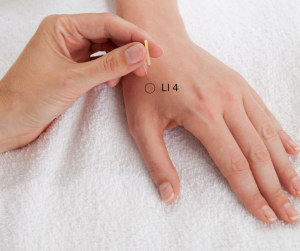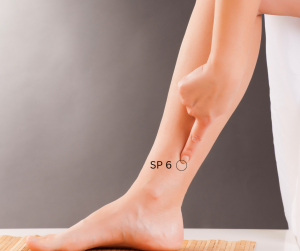It is finally time, you’ve reached the third trimester, the transitioning from pregnancy to childbirth. It is almost time to meet your long awaited little one! Your heart is filled with excitement but you may also be a little scared approaching the birth, particularly if you are expecting your first child or if you had a traumatic experience in the past.
What happens during the third trimester?
As you are getting closer to 40 weeks of gestation, your body will start to prepare for childbirth. Your little one slowly moves down into the pelvic cavity, the position of your cervix changes, the cervix softens up and starts dilating to make space for the baby to move through.
What hormonal changes take place during this time?
A number of important hormones come into play during the 3rd trimester. Let’s have a look at them:
- Endorphines
Endorphines are a natural pain reliever and they increase during childbirth to make the labor more endurable. The more endorphins you have, the more enjoyable labor will be.
endorphins you have, the more enjoyable labor will be.
- Oxytocin
Oxytocin is responsible for promoting contractions. Every contraction will help to dilate and soften up the cervix. Oxytocin is also the hormone of love and attachment. It is released during sex, labor and breastfeeding. This is why it is sometimes suggested to have sex during late pregnancy. Also, by practising gratitude and becoming aware of how much you love your baby and your partner, your body stimulates the release of oxytocin.
- Prostaglandin
Prostaglandins help with the ripening of cervix. A softer cervix will help with dilation, making it easier for the baby to come through the birth canal.
- Relaxin
As you approach childbirth, the body produces relaxin to relax all the ligament and muscles in the lower abdomen to make space for the baby. This is also why you might experience more back pain, hip pain, and pubic symphysis pain.
- Adrenaline
Adrenaline is the fight or flight hormone. When we feel stress, fear, or pain, our body releases adrenaline to us cope with these emotions. If we have too much adrenaline in our system, it can block oxytocin receptors which then can slow down labor. Approaching child birth can be a stressful and fearful time, particularly if you are given an induction date. It is important to start early with your labor preparation to keep calm and avoid too much adrenaline in your system.
Preparing your body for labor in the third trimester.
Waiting for labor to start can be a very anxious time. There are many things you can do to help your body prepare for the drastic energy shift leading up to childbirth. Better preparation also means better recovery.
- Drink raspberry leaf tea or take capsules
Drinking raspberry leaf tea to prepare your body for childbirth is a practice that has been around for a long time. If you are not a tea drinker, raspberry leaf capsules are a good alternative.
- Walking
Movement is extremely crucial during the third trimester. A study has found that starting from 34 weeks, walking 30-40 minutes 4 times per week increases the spontaneous onset of labor [1]. As this is also the time when low back pain often kicks in and movement becomes more difficult, it is important you start slowly by doing shorter walks and build it up as you go.
- Relax and laugh
As mentioned above, we do not want you to have too much adrenaline in your body during this phase of pregnancy. It is best to ease down on your work now and relax & enjoy this time of your pregnancy.
- Clary Sage Oil
Clary Sage oil is an essential oil that can help stimulate uterine contractions. It can be used after 37 weeks of gestation. Please dilute the essential oil with a carrier oil (such as coconut oil), and apply it on the abdomen area and the acupressure points listed below.
- Dates
Eating 3 large Medjool dates a day from 37 weeks of gestation has a positive impact on shortening labor and improving the bishop score (which is the calculation to predict how close you are to labor) [2].
- Acupressure
Massaging acupuncture points such as LI4 (He Gu), SP6 (San Yin Jiao), and the sacral foramen points can help to reduce pain and shorten labor time [3,4]. It is recommend to start doing acupressure at 36 weeks of gestation and to increase the frequency as you get closer to childbirth. These acupressure points can also be very helping during labor.


Additional ways to help you prepare for labor.
- Acupuncture
Pre-birth acupuncture is beneficial for helping the body prepare for childbirth. It can help relieve low back pain, hip pain and sciatica. It encourages cervical ripening and shortens labor time [5]. Most importantly, acupuncture has a very strong calming and relaxing effect on mind and body. We usually commence labor prep acupuncture from week 34.
- Hypnobirthing class
Taking a childbirth education class is a very good way to gain more knowledge about labor. When you have more knowledge, you generally feel less anxious. These classes are taught face-to-face or online. It is recommended that both parents attend classes together for optimal support during the labor process.
- Hiring a doula
Being pregnant can be very overwhelming and it can be very challenging if you don’t have enough support. Having a doula who is professionally trained to walk you through the whole journey will change your experience. We love working with Alison Hansen Doula, visit her site to see what she can offer!
 How do I make an appointment for labor preparation?
How do I make an appointment for labor preparation?
The team here at Natural Solutions Acupuncture we love supporting women during their transition to child birth. You can make an appointment here, or give us a call on 0414 067 874.
References:
[1] Shojaei, B., Loripoor, M., Sheikhfathollahi, M. and Aminzadeh, F. (2021). The effect of walking during late pregnancy on the outcomes of labor and delivery: A randomized clinical trial. Journal of Education and Health Promotion, [online] 10, p.277. doi:10.4103/jehp.jehp_1437_20.
[2] Bagherzadeh Karimi, A., Elmi, A., Mirghafourvand, M. and Baghervand Navid, R. (2020). Effects of date fruit (Phoenix dactylifera L.) on labor and delivery outcomes: a systematic review and meta-analysis. BMC Pregnancy and Childbirth, 20(1). doi:10.1186/s12884-020-02915-x.
[3] Ozgoli, G., Sedigh Mobarakabadi, S., Heshmat, R., Alavi Majd, H. and Sheikhan, Z. (2016). Effect of LI4 and BL32 acupressure on labor pain and delivery outcome in the first stage of labor in primiparous women: A randomized controlled trial. Complementary Therapies in Medicine, 29, pp.175–180. doi:10.1016/j.ctim.2016.10.009.
[4] Lee, M.K., Chang, S.B. and Kang, D.-H. (2004). Effects of SP6 Acupressure on Labor Pain and Length of Delivery Time in Women During Labor. The Journal of Alternative and Complementary Medicine, 10(6), pp.959–965. doi:10.1089/acm.2004.10.959.
[5] Rabl, M., Ahner, R., Bitschnau, M., Zeisler, H. and Husslein, P. (2001). Acupuncture for cervical ripening and induction of labor at term–a randomized controlled trial. Wiener Klinische Wochenschrift, [online] 113(23-24), pp.942–946. Available at: https://pubmed.ncbi.nlm.nih.gov/11802511/.

